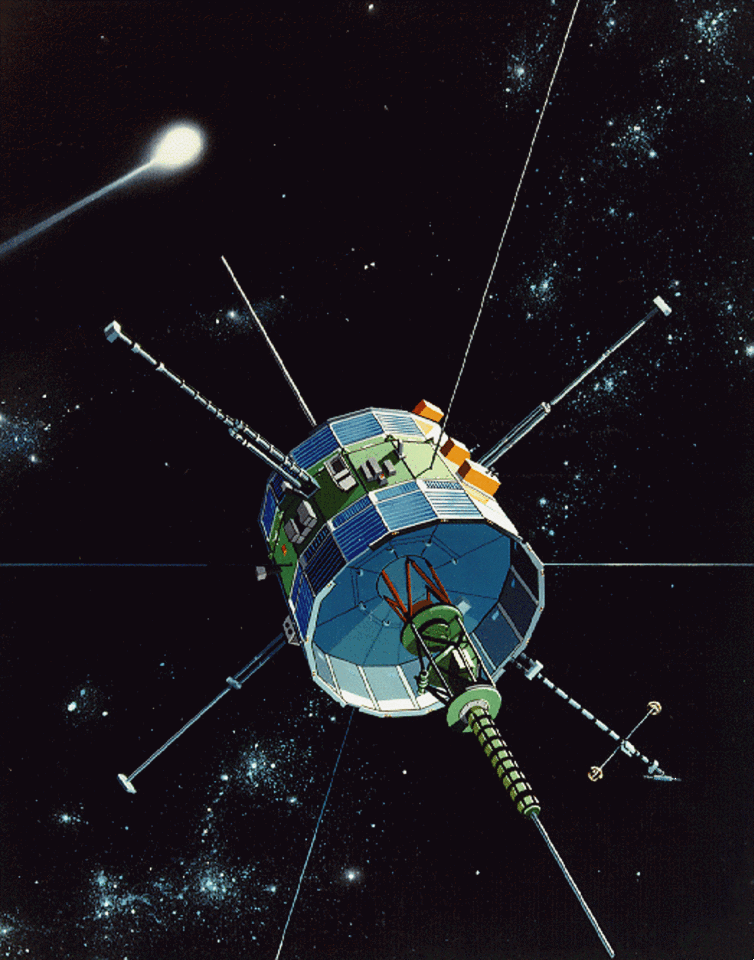A chapter of space history closed today as an ambitious project by a private organization to bring a 36-year old spacecraft back to life came to an end. Despite efforts by the ISEE-3 Reboot Project to restart the ISEE-3’s propulsion system, the unmanned probe has now been hurled back into deep space after a lunar flyby.
ISEE-3 is currently over 20,000 km (12,000 mi) from the Moon and over 370,000 km (230,000 mi) from Earth. Launched in 1978 and originally tasked with studying the outer reaches of the Earth’s magnetosphere, the probe was given a second mission in the 1980s of chasing comets before being shut down in 1997. In April, the private ISEE-3 Reboot Project made up of the team behind the Lunar Orbiter Image Recovery Project (LOIRP), Space College, Skycorp and SpaceRef started a crowdfunding project that raised US$159,502 for the goal of reestablishing contact with the probe.
The hope was to reactivate the spacecraft, then order it to fire its engine in May or June to put it on a new trajectory for a close 51 km (31 mi) flyby of the Moon that would allow it to carry out new exploration missions, such as another comet flyby. In an unprecedented move, NASA formally handed over control of ISEE-3 to the group on May 21, and later that same month contact was reestablished and the group carried out a series of tests after ordering the craft to broadcast telemetry back to Earth.

On July 2, the group managed to get the probe to fire its thrusters for the first time since 1987. This allowed them to adjust the craft’s trim. However, it was later discovered that the nitrogen gas needed to pressurize the fuel tanks had bleed away or otherwise been lost over the many years of hibernation, resulting in rapidly decreasing performance during tests, and the propulsion system was soon no longer functional.
With the main engine inoperative, ISEE-3 could only carry on along its original trajectory and today at 18:16 GMT, the craft flew by the moon at a distance of 15,600 km (9,700 mi) and is headed back into deep space, where it will orbit the Sun before returning to Earth in 17 years.

Though the attempt to revive ISEE-3 has failed, the ISEE-3 Reboot Team has found a new mission for the spacecraft. On July 24, the group announced that it has established the ISEE-3 Interplanetary Citizen Science Mission, which will allow the public access to the data still being transmitted by the craft as it speeds away from Earth.
Having shut down the probe’s thrusters, the group left five of the science experiments operating and transmitting data back to Earth on the planet’s magnetic field, solar winds, and cosmic radiation for as long as it remains within radio range. This data, along with information on the spacecraft, is available to the public on an interactive website that also explains the history of the reboot effort.
Source: Space College











